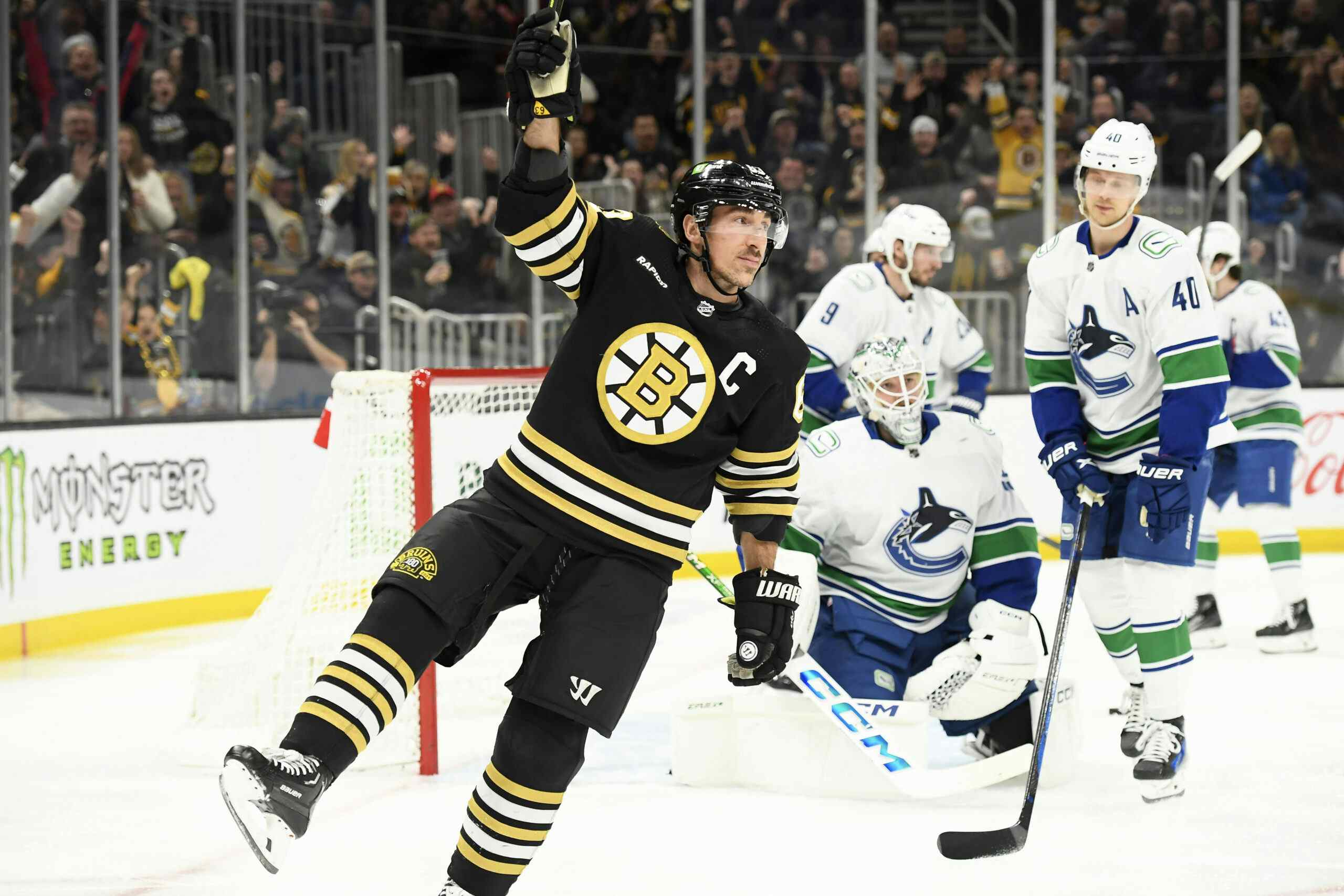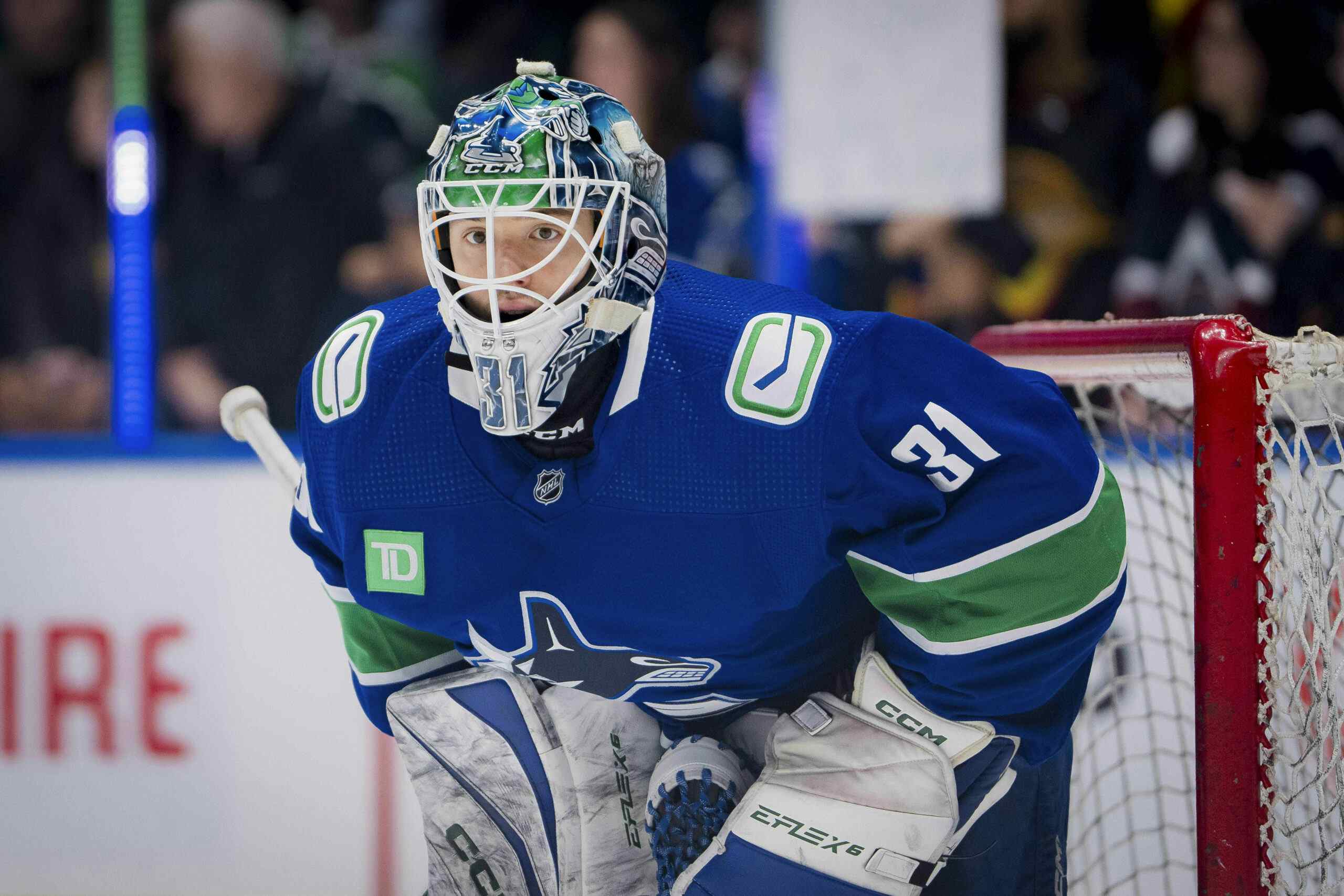Canucks Draft Gems Retrospective – Part Five: Pavel Bure
By Taylor Perry
7 years agoHis name, as befits someone with the moniker of the “Russian Rocket,” was synonymous with speed. He was electrifying, exhilarating, and sometimes infuriating. He could do things at fourth gear that many players couldn’t do in first. And, unlike the other players we’ve covered in this series to date, his name is now enshrined in the Hockey Hall of Fame. One of only three players drafted by the Canucks to have that honour – and the only to play the majority of his NHL career in a Canucks uniform – Pavel Bure was equal parts hockey and rock star. Given his pedigree and career accomplishments, he may also be the best draft pick in Canucks history. He is also the subject of today’s draft gems.
Of Pavel Bure, there is little of his career that bears repeating here. Many Canuck fans – myself included – began following the Canucks during Bure’s ascendancy. He was Vancouver’s first true superstar, a player on the home team that fans would come to watch regardless of the opposition. Case in point – his first game, against the mediocre Winnipeg Jets (sans Teemu Selanne), was a miserable weekday night in November 1991. Undeterred, the Vancouver faithful flocked to the Rink on Renfrew to witness his first game (which wasn’t televised) and reveled in his every daring end-to-end dash and a dazzling display of skill at warp speed. Ticket availability was standing-room only.
That he was a Canuck draft pick only made it sweeter. In its twenty-plus year history, the franchise had selected very little in the way of superstars. And of those who might have been in the conversation – players like Cam Neely or Rick Vaive – the Canucks had a poor track record of actually keeping them in the organization. In Bure, then, was a gamebreaker with 50-goal potential. And he would do it in the city that drafted him.
But it almost didn’t happen.
Despite being one of the consensus top-three talents in an otherwise weak draft year – along with Mats Sundin and Bobby Holik – concerns about Bure’s availability and release from the Soviet Union made teams wary of selecting him with a high pick. It was June 1989, and Soviet players coming to play in North America was a process only in its infancy – and then, only for aging and more established stars. Bure, playing for Central Red Army at 18, would probably be stuck behind the Iron Curtain for at least another few seasons. Even prior to the draft, Canuck chief scout Mike Penny doubted the team would select Bure. “Bure is a great player,” he admitted, but stated, “We’re not likely to be taking him.”
For the Canucks, the first five rounds of the 1989 draft were mostly forgettable. The three players they drafted would amount to exactly 38 NHL games – and none of them with Vancouver. On the clock for the 113th overall pick, Penny insisted they take a chance on Bure. “Take him,” he said, “He’s the best player available.”
After the third round, there were additional questions around whether or not Bure was even draft-eligible. Draft rules at the time stated that European 18 year-olds picked after the third round must have played two seasons – defined as 11 games – in a European First Division league. Bure had played 32 games with CSKA Moscow in 1988-89 (scoring 17 goals), but official records indicated he had only played in five games the season previous. Brian Burke, then the Canucks assistant GM, said that he had information from a Moscow-based informant who had evidence of Bure playing 11 games – nine league games and two exhibition – with CSKA in 1987-88. Penny, however, had a different story. He claims he personally witnessed Bure play in person twice with the Soviet national team in Finland, in addition to the apparent nine league games he played with CSKA. His version of the story, meanwhile, did not feature a mysterious Moscow informant.
Other teams had conflicting interpretations of the draft rules. Edmonton chief scout Barry Fraser believed the three-round rule didn’t apply to Bure. “Actually, he [Bure] can be picked in any of the 12 rounds because he’s played in their Elite League (with Red Army),” he said prior to the draft. Most teams, however, believed Bure to be ineligible and caused a minor uproar when the Canucks decided to select him. Several teams – including Pittsburgh and Washington – approached the podium to protest the Canucks’ pick. NHL Vice-President Brian O’Neill dismissed their protestations and deemed the Bure pick valid.
The drama didn’t end there, however. After the draft, NHL President John Ziegler announced the league would investigate the pick and Bure’s eligibility. The investigation, which lasted almost one year, concluded in May 1990 that Bure was indeed ineligible as several teams had claimed. Ziegler stated that Bure had not played the required number of games during the 1987-88 season and that he would, therefore, re-enter the 1990 draft. Canuck GM Pat Quinn was unimpressed with the ruling. “I don’t agree with the result, obviously,” he said, “But I want to meet with Ziegler and find out what (appeal) procedures, if any, are now open to us.”
And appeal Quinn did. He enlisted the aid of then-Canuck Igor Larionov to verify Bure’s record. “We had Igor do some research right after the decision,” said Quinn, “and he was able to visit with the appropriate people and come up with a more refined set of statistics.” The “appropriate people” to which Quinn referred was actually just one person, Soviet journalist Igor Kuperman. Kuperman found that Bure had, in fact, played the requisite 11 games that season, finding another six in addition to the already verified five. The information was certified by the Soviet Ice Hockey Federation and reinstated Bure as an unsigned player on Vancouver’s reserve list on the eve of the 1990 draft, which coincidentally happened to be in Vancouver.
The conflicting Penny and Burke accounts suggest that there is still more to the story of how Bure became a Canuck. Furthermore, although the public record indicates that Ziegler reversed his initial ruling in response to the new evidence uncovered by Kuperman, Tony Gallagher reported in May 1992 that the team reached a backroom deal with the league in the Bure affair. An anonymous NHL owner and general manager leaked that the Canucks had said they would drop a lawsuit related to Pat Quinn’s hiring and resulting suspension several years before if the league reversed its ruling on Bure. Although owner Arthur Griffiths disputed the report, Gallagher continued to insist on its accuracy. Either way, the Canucks had their Soviet superstar.
The rest of Bure’s story has been told elsewhere, and is all too familiar to most Canuck fans, so I won’t repeat it here. Yet his selection in the sixth round of the 1989 draft remains a landmark moment in Canucks history. The intrigue surrounding his pick only makes the story more fascinating. And given the round when he was selected, and the subsequent career he enjoyed, it is tempting to suggest that Pavel Bure is the best draft pick in the history of the franchise. He is also, undeniably, a late round draft gem.
With files from the Vancouver Sun, The Province, The Globe and Mail, and Kerry Banks’ Pavel Bure: The Riddle of the Russian Rocket (Greystone Books: 1999). (Pretty sure I got the photos correct this time, too!)
Recent articles from Taylor Perry





